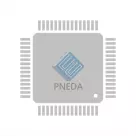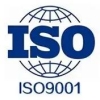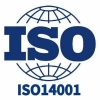Optocouplers in future technologies: Beyond traditional roles

As the core device of photoelectric conversion, optical couplers play a key role in the field of information technology. Traditional optocouplers mainly realize electric-optic-electrical signal conversion, and play an important role in circuit isolation and signal transmission. With the rapid development of cutting-edge technologies such as artificial intelligence and quantum computing, the functional positioning of optical couplers is undergoing fundamental changes. The new generation of optocouplers is no longer limited to simple signal conversion, but towards the direction of intelligent, integrated, multi-functional evolution. This change is not only reflected in the improvement of device performance, but also changes the role of the optical coupler in the information system. Optical couplers are gradually evolving from traditional information transmission Bridges to intelligent cores with information processing capabilities, which will profoundly affect the development direction of future information technology.
一, The technical limitations of traditional optical couplers
Traditional optocouplers use the basic structure of LED-photodiode or LED-phototransistor to achieve electrical isolation of input and output through optical media. Although this structure is simple and reliable, it has obvious shortcomings in transmission rate, linearity, power consumption and so on. The transmission rate of typical optical couplers is usually less than 10Mbps, which is difficult to meet the needs of high-speed data transmission. In terms of linearity, traditional devices are limited by the nonlinear characteristics of leds, and the distortion is serious during analog signal transmission. In terms of power consumption, the high energy consumption characteristics of LED limits its application in low-power scenarios.
At the application level, traditional optical couplers are mainly limited to basic functions such as circuit isolation and level conversion. Its simple functional orientation makes it difficult to meet the requirements of modern information technology for intelligent and multi-functional devices. In the field of industrial control, traditional optocouplers, although able to provide reliable electrical isolation, lack intelligent processing capabilities for signals. In the field of communication, its limited bandwidth and high power consumption restrict its application in high-speed data transmission.
Facing the demand of the new generation of information technology, the limitations of traditional optical couplers in performance and application have become increasingly prominent. Emerging technologies such as 5G communication, the Internet of Things, and artificial intelligence have put forward higher requirements for optoelectronic devices, and traditional optocouplers have been difficult to meet these needs. This technical bottleneck not only limits the development of the optical coupler itself, but also restricts the progress of related technologies to a certain extent.
二, The technical breakthrough of a new generation of optical couplers
The application of new materials and structures has brought revolutionary breakthroughs to optical couplers. Optical couplers based on new photoelectric materials such as quantum dots and two-dimensional materials significantly improve device performance. The quantum dot material has adjustable luminous wavelength and high quantum efficiency, which greatly expands the operating wavelength range of optical couplers. The application of two-dimensional materials, such as graphene, brings ultra-fast response speeds and excellent linear properties. In the structural design, the introduction of new structures such as waveguide integration and micro-cavity resonance further improves the photoelectric conversion efficiency of the device.
In terms of performance improvement, the new generation of optical couplers has achieved a qualitative leap in a number of key indicators. The transmission rate breaks the 10Gbps mark, which can meet the needs of high-speed data transmission. The linearity is improved to less than 0.01%, which greatly improves the fidelity of analog signal transmission. The power consumption is reduced to 1/10 of that of traditional devices, making it possible for low-power application scenarios. Temperature stability, anti-interference ability and other indicators have also been significantly improved.
Functional innovation is another important feature of the new generation of optical couplers. Intelligent optical coupler integrates signal processing, condition monitoring, adaptive adjustment and other functions to realize the transformation from passive devices to active devices. For example, optocouplers with self-diagnostic capabilities can monitor device status in real time and predict the risk of failure. Adaptive optical couplers can automatically adjust operating parameters according to environmental conditions to optimize performance. These innovative functions have greatly expanded the application range of optical couplers.
三, The new role of optical couplers in future technology
In the field of quantum communication, optical couplers play a key role in quantum state conversion. The new optical coupler can realize efficient conversion between qubits and photons, and provide basic support for the construction of quantum communication networks. By integrating the functions of single photon detection and quantum state modulation, optical couplers become the core devices in quantum communication systems. This role change not only enhances the technical value of optical couplers, but also promotes the practical process of quantum communication technology.
In artificial intelligence hardware, optical couplers are becoming an important component of optoelectronic hybrid computing. The new optical coupler can realize the efficient interconversion of optical signal and electrical signal, and provide hardware support for the photoelectric hybrid computing of a neural network. By integrating optical computing units, optical couplers can directly participate in neural network operations, significantly improving computing efficiency. This deep integration transforms the optocoupler from a simple connected device to an intelligent computing unit.
In iot systems, the role of optocouplers has expanded from a single isolated device to an intelligent sensing node. Optical couplers with integrated sensor and signal processing functions can directly collect and process environmental information to achieve intelligent perception. For example, in the industrial Internet of Things, intelligent optical couplers can simultaneously complete tasks such as electrical isolation, condition monitoring, and fault diagnosis, greatly simplifying the system structure. This versatile integration makes optical couplers an important component of iot terminals.
The evolution of optocoupler technology reflects the new trend of information technology development. From simple signal conversion to intelligent information processing, the role change of optical couplers not only promotes the upgrade of the device itself, but also provides new possibilities for the development of related technologies. In the future science and technology ecology, optical couplers will continue to deepen their functional positioning and play a key role in more fields. This shift requires us to re-understand the value of optical couplers and seize new opportunities in technology development and application innovation. The future development of optocouplers will profoundly affect the direction of information technology and provide important support for building an intelligent and efficient information society.
The Products You May Be Interested In
 |
AMI-28-12-3 | LINE FILTER 110/250VAC 12A CHAS | 7812 More on Order |
 |
AMI-28A-6-3 | LINE FILTER 110/250VAC 6A CHAS | 2556 More on Order |
 |
AMI-M11P-6-20-B | LINE FILTER 250VAC 6A CHASS MNT | 6354 More on Order |
 |
AMI-22B-20-3 | LINE FILTER 250VAC 20A CHASS MNT | 5940 More on Order |
 |
AMI-28B-1-1 | LINE FILTER 110/250VAC 1A CHAS | 5940 More on Order |
 |
AMI-M12T-1-10-B | LINE FILTER 250VAC 6A CHASS MNT | 2232 More on Order |
 |
AMI-26B-3-3 | LINE FILTER 250VAC 3A CHASS MNT | 8226 More on Order |
 |
AMI-M12A-3-6-B | LINE FILTER 250VAC 3A CHASS MNT | 4878 More on Order |
 |
AMI-22-20-3 | LINE FILTER 250VAC 20A CHASS MNT | 3744 More on Order |
 |
AMI-23A-4-3 | LINE FILTER 250VAC 4A CHASS MNT | 7146 More on Order |
 |
AMI-M12S-7-5-B-2 | LINE FILTER 250VAC 7A CHASS MNT | 4878 More on Order |
 |
AMI-21A-12-3 | LINE FILTER 250VAC 12A CHASS MNT | 5634 More on Order |
 |
AMI-M11A-6-20-D | LINE FILTER 250VAC 20A CHASS MNT | 5022 More on Order |
 |
AMI-29-20-6 | LINE FILTER 110/250VAC 20A CHASS | 2988 More on Order |
 |
AMI-M11D-6-20-B-1 | LINE FILTER 250VAC 20A CHASS MNT | 2646 More on Order |
 |
AMI-21B-20-1 | LINE FILTER 250VAC 20A CHASS MNT | 5022 More on Order |
 |
AMI-29B-6-1 | LINE FILTER 110/250VAC 6A CHAS | 2736 More on Order |
 |
AMI-M12B-1-6-B | LINE FILTER 250VAC 6A CHASS MNT | 3618 More on Order |
 |
AMI-29B-3-1 | LINE FILTER 110/250VAC 3A CHAS | 4698 More on Order |
 |
AMI-23-10-1 | LINE FILTER 250VAC 10A CHASS MNT | 3150 More on Order |
 |
AMI-M11R-7M-6-B-2 | LINE FILTER 250VAC 6A CHASS MNT | 6930 More on Order |
 |
AMI-22B-6-1 | LINE FILTER 250VAC 6A CHASS MNT | 6282 More on Order |
 |
AMI-M11J-1-10-B-2 | LINE FILTER 250VAC 10A CHASS MNT | 6012 More on Order |
 |
AMI-21-3-3 | LINE FILTER 250VAC 3A CHASS MNT | 8424 More on Order |









